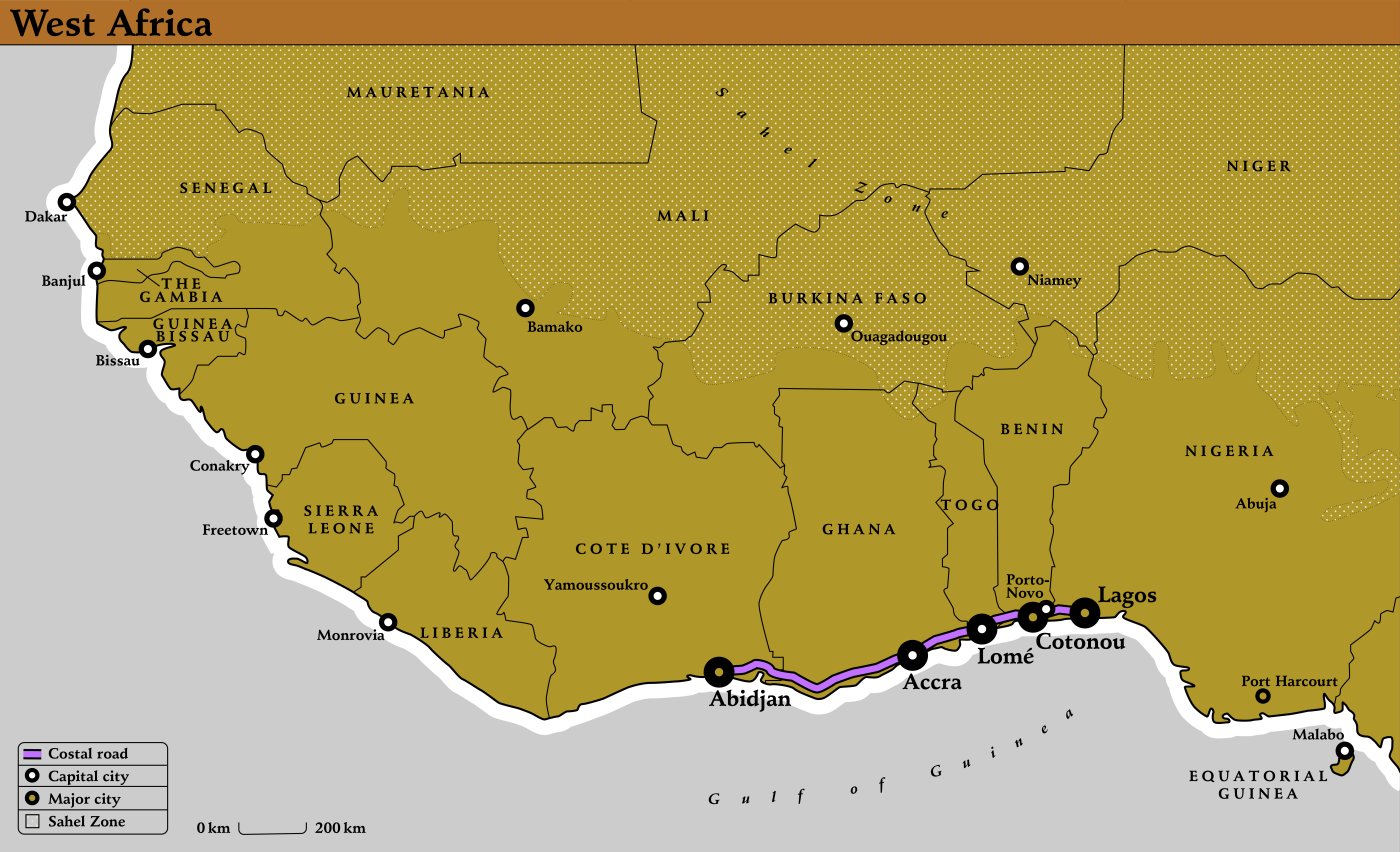Strangers Along the Corridor
Four national borders cut across the Lagos-Abidjan corridor, dividing the territory between five nations. In this context national borders, drawn up by colonial powers, do not necessarily define who is foreign or a stranger within a given community. Ethnic groups, kinship groups and linguistic groups are spread over these lines. They enable a form of continuity along the corridor, maintaining connections across national borders. For example the Ewe group resides both in Benin and Togo, whilst many Yoruba reside in Porto Novo but feel equally at ease in Nigeria. Difference is more marked with groups from the North, predominantly Muslim, poorer and more rural, than for those in the South who are predominantly Christian, better off and more likely to be urban. Coastal dwellers along the corridor are therefore more likely to share certain commonalities between themselves, than with respective nationals living in the north of their countries.
This raises the question then of who is a migrant? Who belongs and who does not? For the anthropologist Franz Boas, this question is “among the most crucial and controversial in African politics.”1 Yet while migration is a process, migrant is a label. As a theoretical category it sits ill at ease with local constructions of identity and belonging. As opposed to European regimes of migration, a migrant in the Beninese case is not necessarily a foreigner. Beninese who move within the country are also referred to by civil servants, policy makers and planners as migrants. Furthermore, claims to national citizenship are not immediate or guaranteed. Citizenship, place of birth, length of residence or nationality are not necessarily aligned with the status of being a stranger. Indeed, as AbdouMaliq Simone notes, “Africa with its long history of incorporating strangers into societies, has been equally adept at turning long term residents into strangers.”2
In Benin, the term in Fon ‘jõnɔ’, refers to stranger, but can also mean expat or visitor. It is used to refer to someone who is an outsider in regards for example to the household, or a work institution. The French term étranger captures both the idea of stranger, and that of the foreigner. In the context of African migration, the term ‘stranger’, as proposed by the german sociologist Georg Simmel, is theoretically sturdier and resonates more closely with African cultures than the term ‘migrant’. Simmel’s seminal text “The Stranger” is regularly mobilized by scholars of urban migration in Africa. From studies of Ghaneans in Lomé,3 to Malians in Brazaville,4 Sub-Saharans in Fès5 or British returnees in Uganda,6 researchers return to Simmel to problematise the category of the stranger and the spatial consequences of migration in the African city.
In Simmel’s terms, the stranger is not the “wanderer who comes today and and goes tomorrow, but rather the person who comes today and stays tomorrow.”7 The stranger is defined by a possible future mobility, for “although he has not moved on, he had not quite overcome the freedom of coming and going.”8 This passage, as Spire notes, shows Simmel’s intention to distinguish the traditional stranger itinerant of the yesteryear, to a ‘modern’ concept of the stranger, tied to the notion of urbanity, and the town where the stranger settles.9 Strangers are, as Fortes points out “inassimilable aliens” that remain the polar opposite of kin in terms of language, social organisation, or religion.10 For the anthropologist Whitehouse, this is captured in the Malian expression “however long a log may float in the water, it will never become a crocodile.”11
From the perspective of the Lagos-Abidjan corridor, the notion of the stranger resonates deeply. It establishes the premise that strangeness is always negotiated with other urban inhabitants, rather than being a fixed category ascribed by the basis of nationality. The corridor is an incredibly diverse location and it is within this corridor that diverse populations are crossing paths, but also settling down in proximity to each other. Strangeness become a tactic, and at times a ruse, with which to navigate along the corridor. This is especially true given the cross-border trading, for as Georg Simmelreminds us, the stranger appears everywhere as the trader, or the trader as the stranger.
